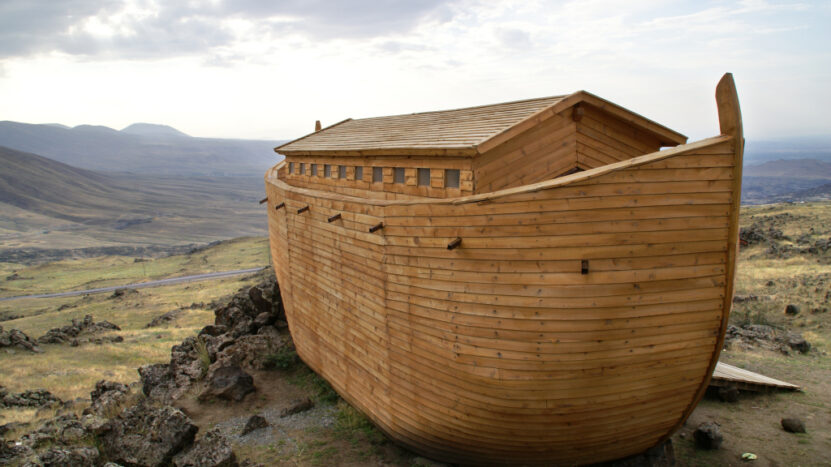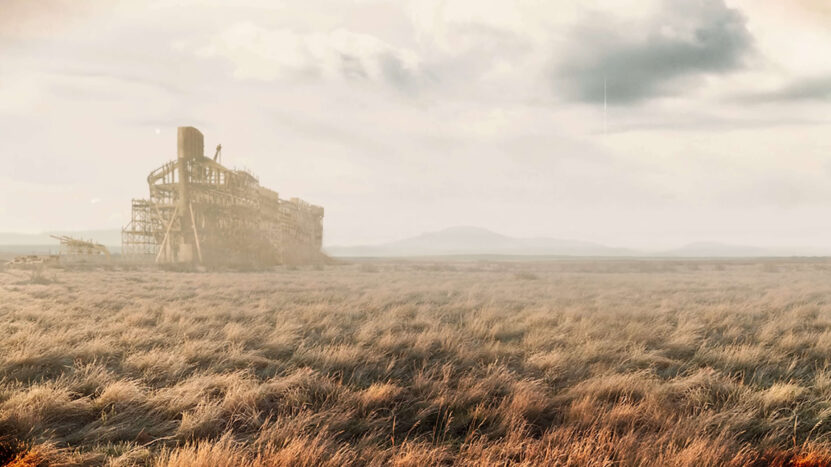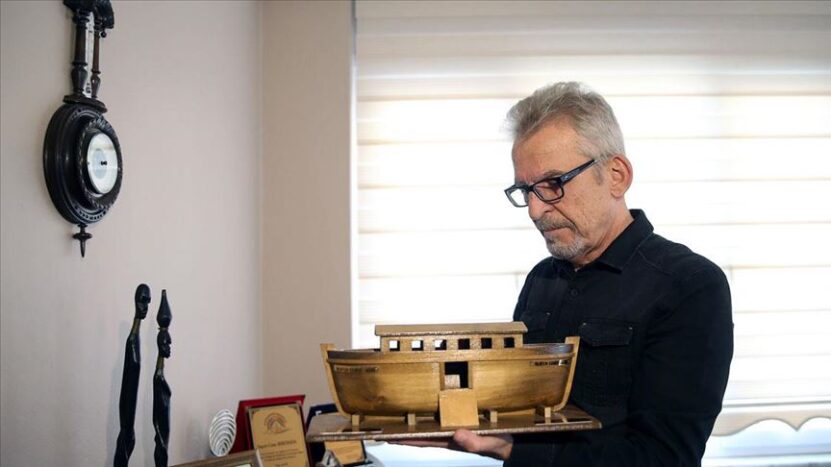Mount Ararat is tall and majestic. Everything has been shrouded in mystery and secrets since biblical days. Although it used to belong to Armenia, today it is located in eastern Turkey. Archaeologists have explored this mountain for centuries, which also attracts historians.
According to legend, Noah ark on Ararat came to rest on these foggy peaks after the great flood (Genesis 8:4), and the world was born again from here, it has such a meaning for Armenians, but also for many Muslims and Christians, and that’s why they called it “Mother of the World”.
Legendary volcano
For Armenians, Mount Ararat is a national symbol, often called the “Mother of the World.” They believe it to be the landing place of the ark, making it a sacred mountain.
Mount Ararat is a magnificent upright volcano, unique and glorious in its multitude of legends, appearance and content. The 40-kilometer long range consists of the Great Ararat, whose dome reaches a height of 5,137 meters, the “Mother” and the Little Ararat with a height of 3,896 meters, which is the “child” of the largest mountain in Turkey with the highest peak in this area.
The top of the mountain represents a special beauty and has a mystical appearance as it is covered with snow and ice all year round, and the mountain is embraced by thick fog already since August. The mountain has a microclimate with strong winds and blinding fog.

The mountain is located in the very east of Turkey on the border with Armenia and Iran, and everyone knows it and everyone has their own stories and legends about the magnificent-looking mountain ranges. Armenians call it the “mother of the world” and believe that Noah’s ark stopped here after the great flood and that this very mountain is the cradle of the world.
The Persians call it “Noah Ararat“. In the Koran, there is Noah’s story about how a flood wave carried the ark right here, on El Yeda (the Arabic name for Ararat).
Ararat means “Mountain of Pain” in Turkish and “Mountain of Fire” in Kurdish. Armenians call it “Masis”, and in the Bible it was mentioned as “Urartua” – the name that the inhabitants of this climate bore in biblical times.
It is said that in the basin there are caves, ancient carved rocks and Jacob’s well. Further along the canyon is a glacier, the place where the ancient Noah’s Ark is supposedly hidden.
What type of evidence was discovered in regards to Noah’s Ark near the top of Mount Ararat?
Many people claim to have found Noah’s Ark, but there’s no real proof. Let’s look at some of the most famous claims:
Navarra
According to Fernand Navarra, a French industrialist and amateur mountaineer, (J’ai trouvé L’Arche de Noé ) on negotiating a gully on slightly sloping terrain high up on the Mount Ararat he saw “through the thickness of ice, some dark and intermingled outlines. These could only be fragments of the Ark.”

Digging his way through the ice, Navarra claimed that he “touched with numbed fingers a piece of wood, not just something from a tree branch, but wood that had been shaped and squared off.”
By way of ‘proof’ of this, Navarra brought down with him a broken-off spar. Radio-carbon dating by the University of Pennsylvania’s Radiocarbon Laboratory dated this to approximately 650 CE, while the National Physical Laboratory, Teddington in Britain, arrived at approximately 760 CE. In other words, the timbers were probably from the hut of a Byzantine hermit.
Institute for Creation Research
In 1971, expeditions to Ararat were mounted under the auspices of the Institute for Creation Research. Although one such expedition, led by ‘arkeologist’ John Morris, claimed several sightings of their supposed ark, they returned with nothing to show.
Wyatt, Fasold and Roberts
In 1960 a Turkish army captain named Ilhan Durupinar, in the course of examining aerial photos of the Ararat region that had been taken for NATO’s Geodetic Survey of Turkey, happened to notice what appeared to be a large boat-like object lying at an altitude of some 1,900 metres.
In 1977, ‘biblical archaeologist’ Ron Wyatt flew to Turkey to investigate. Convinced by what he saw, Wyatt published Discovered: Noah’s Ark, in 1989. The same year also saw the appearance of a book by former merchant marine officer David Fasold, The Ark of Noah, following much the same argument.
A year later Australian ‘Dr’ Allen Roberts visited the site. In collaboration with Wyatt, he then founded an organization called Ark Search, and like Wyatt and Fasold began widely publicizing that the Akyayla boat-shaped feature was the true Noah’s ark.
Fasold, Wyatt and Roberts have also made much of “subsurface radar surveys” of the Akyayla feature, purportedly showing it to have a ship-like structure in the interior parts to which no one has yet gained access.
Ian Plimer, Professor of Geology at Australia’s Melbourne University, visited the Akyayla site with Fasold in 1994. He found it impossible to repeat any of the various radar, seismic, magnetic, and electromagnetic tests claimed by Wyatt.
According to Plimer’s professional judgment, the Akyayla boat is simply an outcrop of 120 million-year-old sea floor rocks (ophiolite), around which a more modern (and still moving) mudslide has flowed, this slide even has bits of plastic embedded in it.
Apparently Fasold himself came to recognize that what Wyatt had argued to be “boat ribs” were no longer evident, concluding that these must have been deliberately scraped into the soil to appear as they did in Wyatt’s photographs. He no longer accepts that the outcrop is really Noah’s Ark.”
Archaeological Explorations
The mountain has its own microclimate, characterized by strong winds and fog that can appear suddenly. This creates challenging conditions for expeditions and adds to the mystery surrounding the mountain.
In ancient times, this mountain was climbed from the town of Igdir, on the northern side of the mountain, and the first man to climb the mountain to the top, in 1829, was Johan Jacob Van Parrott, a pioneer of Russian and Estonian mountaineering.
He organized and successfully carried out the first expedition to Ararat and wrote a book about it, “Journey to Ararat”. From that time on, the quest to find evidence of the existence of Noah’s Ark began, mostly in vain.
Ararat’s summit is covered in ice year-round, preserving the area in a relatively undisturbed state, which adds to the possibility that ancient artifacts, if present, could be well-preserved beneath the ice.
There are speculations that a French expedition in the middle of the 20th century found a piece of wood at an altitude of 4,200 meters above sea level, that the wood was sent for examination and that the age of the oak was established at about 5,000 years. Even Marco Polo wrote about Noah’s Ark on Ararat in 1300.
Cultural and Religious Matter
In Persian and Kurdish traditions, the mountain is associated with different names and mythological stories, each adding to the mountain’s mystique.
Mount Ararat holds significant cultural and religious importance for many people. It is considered a sacred site by several religions, including Christianity, Judaism, and Islam. Each tradition has its own version of the flood story, but all agree on the presence of a great vessel that saved humanity and animal life from a global catastrophe.
The mountain is a symbol of hope, survival, and ine intervention. For the Armenian people, in particular, Ararat is a national symbol, appearing on their coat of arms and representing their historical and spiritual heritage.
This deep-seated reverence for Mount Ararat enhances its candidacy as the ark’s resting place, adding a layer of spiritual significance to the search for physical evidence.

Scientific Perspectives
The search for Noah’s Ark on Mount Ararat has been ongoing for centuries. Despite modern skepticism, the hope of discovering the ark continues to inspire new generations of explorers and believers.
Geologists, archaeologists and climatologists – all are involved in finding evidence that Noah’s Ark really exists on Mount Ararat. Researchers examine geological formations to identify changes that may have been caused by the Great Flood.
Climate studies examine historical weather patterns to determine whether a flood of this magnitude was possible. Archaeologists are studying ancient texts and artifacts to piece together clues that could lead to the ark.
Despite the challenges, the multidisciplinary approach offers a comprehensive understanding of both the legend and the natural history of the region. Skepticism is, understandably, present. But all research is useful even if no evidence is found.
Why? You simply get better insights about ancient times, civilization. And there is always a chance for new discoveries.
First scientific research
Salih Bayraktutan at Erzurum’s Ataturk University and scientists at California University’s Los Alamos National Laboratory carried out the first scientific research on the area and the ship 26 years after its discovery.

The underground radar images detected a ship’s body and an 80-page scientific report said:
”It is highly likely that the formation underground is a ship. Archaeological excavations must be launched before winter”.
Bayraktutan’s initiative later made the area a protected archeological site.
Conclusion
Mount Ararat, rising in eastern Turkey, is more than just a mountain; it’s a symbol of enduring mystery and hope. For centuries, it has captivated explorers and believers who are drawn by the biblical tale of Noah’s Ark resting on its heights after the great flood. Despite numerous expeditions and tantalizing finds, such as ancient wood fragments and boat-like shapes, definitive proof of the ark remains elusive.
However, Ararat’s unique geological features and profound cultural significance for Armenians, Christians, and Muslims keep the legend alive. The mountain is a sacred site, often called the “Mother of the World,” reflecting its deep-rooted importance in various traditions.
The ongoing search for Noah’s Ark on Ararat is not just a quest for an ancient artifact but a journey into the heart of a story that continues to inspire and intrigue humanity.

